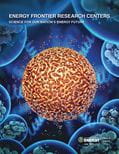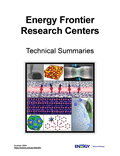Tuning Pore Size to Enhance the Capacitance of Supercapacitors
Scientific AchievementSimulations of nanoporous super-capacitors confirm and help to understand the anomalous increase in capacitance observed in experiment when the pore size is close to the ion size (0.7 nm).
Significance and ImpactThe results point to a novel method for tuning supercapacitors by manipulating pore size and/or electrolyte ion size.
Research Details

Left: MD simulation of capacitance versus pore size (in nm) compared to experiment. Right: Oscillation in capacitance versus pore size (in ion diameters of 0.7 nm) simulated by DFT.
References: [1] De-en Jiang, Zhehui Jin, and Jianzhong Wu, Oscillation of Capacitance inside Nanopores, Nano Lett., 11, 5373-5377 (2011) [DOI: 10.1021/nl202952d].
[2] Guang Feng and Peter T. Cummings, Supercapacitor Capacitance Exhibits Oscillatory Behavior as a Function of Nanopore Size, J. Phys. Chem. Lett., 2, 2859-2864 (2011) [DOI: 10.1021/jz201312e].
[*] Original experiment (not EFRC-funded): Celine Largeot, Cristelle Portet, John Chmiola, Pierre-Louis Taberna, Yury Gogotsi, and Patrice Simon, Relation between the Ion Size and Pore Size for an Electric Double-Layer Capacitor, J. Am. Chem. Soc., 130, 2730 (2008) [DOI: 10.1021/jz201312e].
Support: Work was performed at Oak Ridge National Laboratory and supported by the Fluid Interface Reactions, Structures and Transport (FIRST)Center, an EFRC led by David Wesolowski at Oak Ridge National Laboratory.









